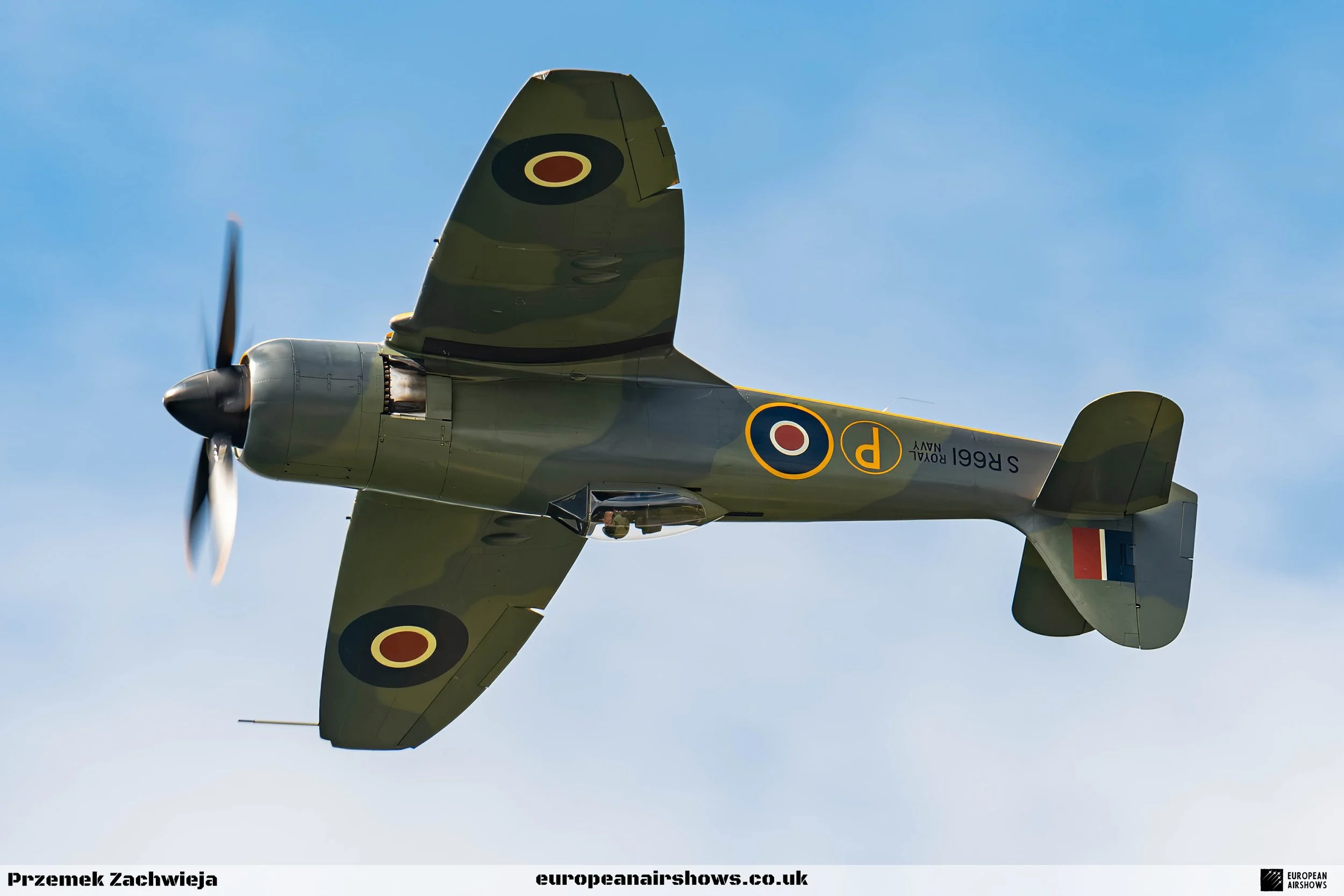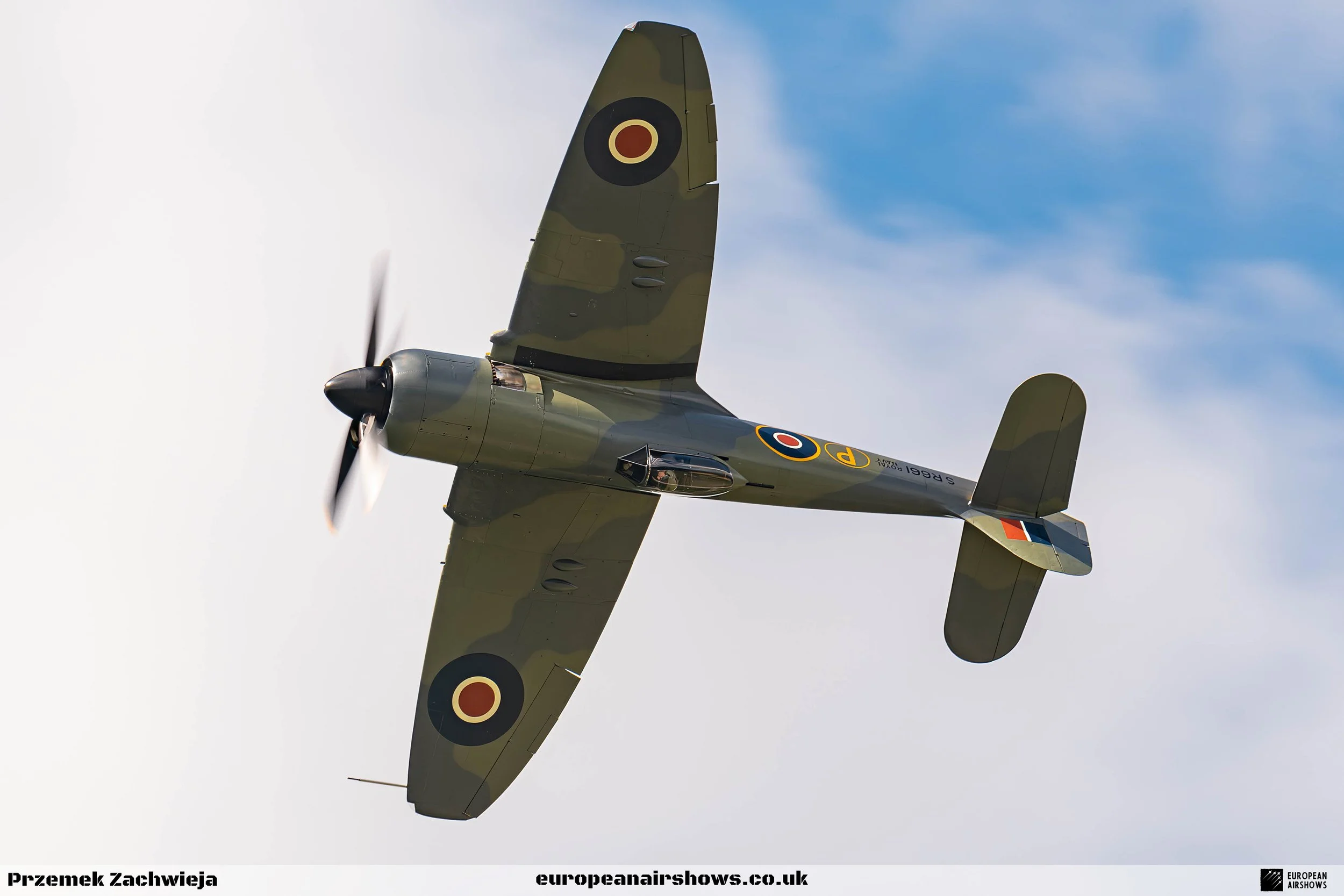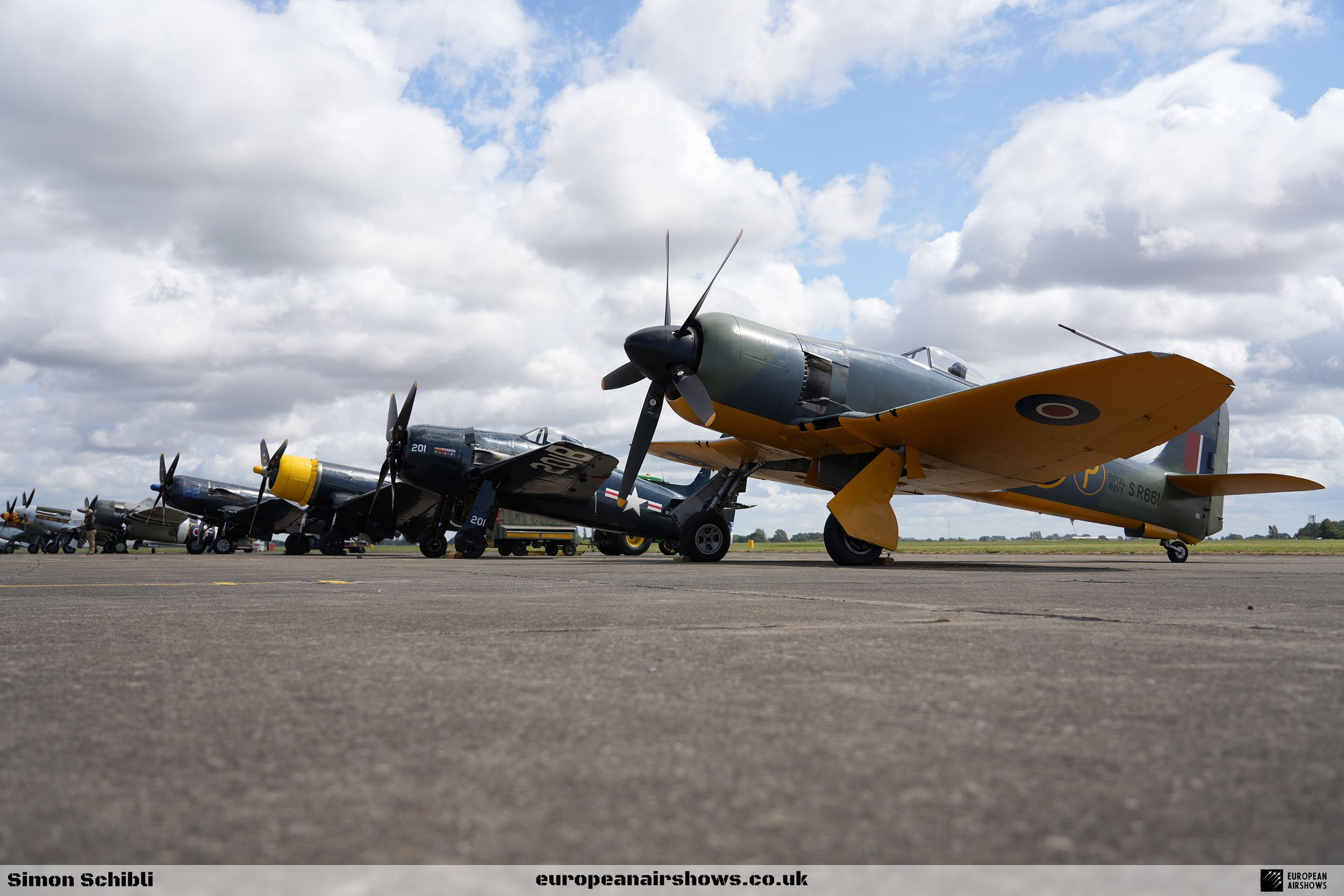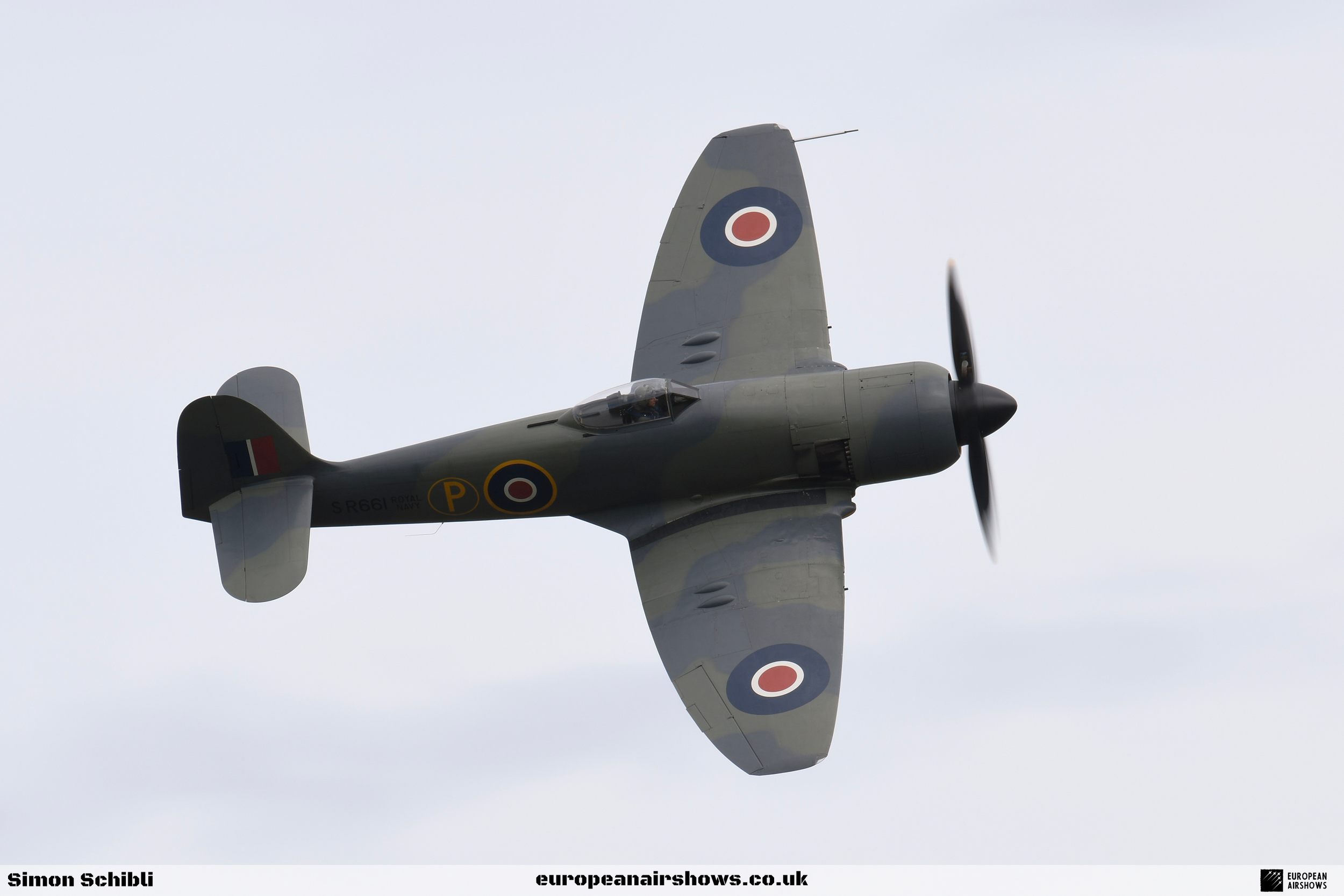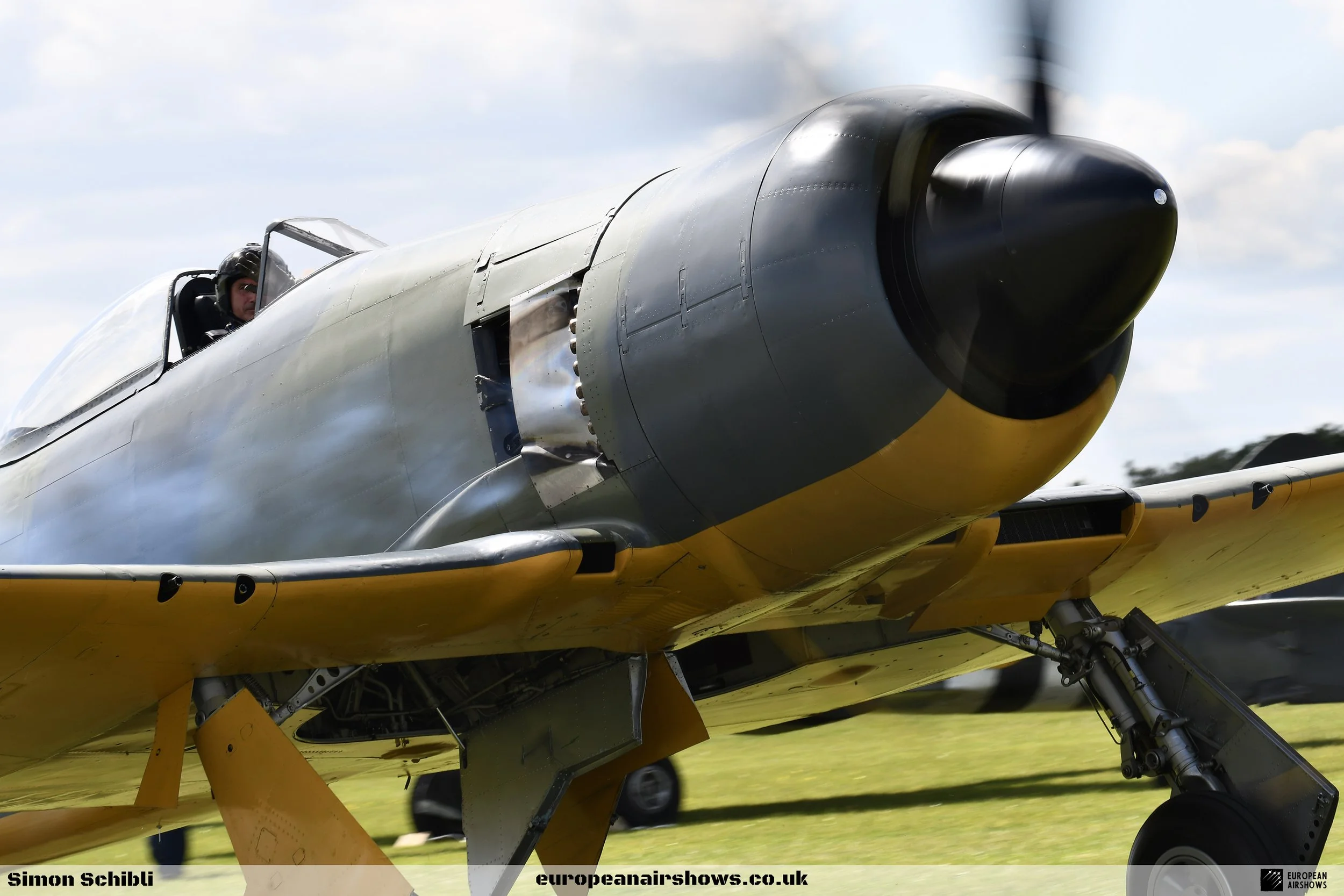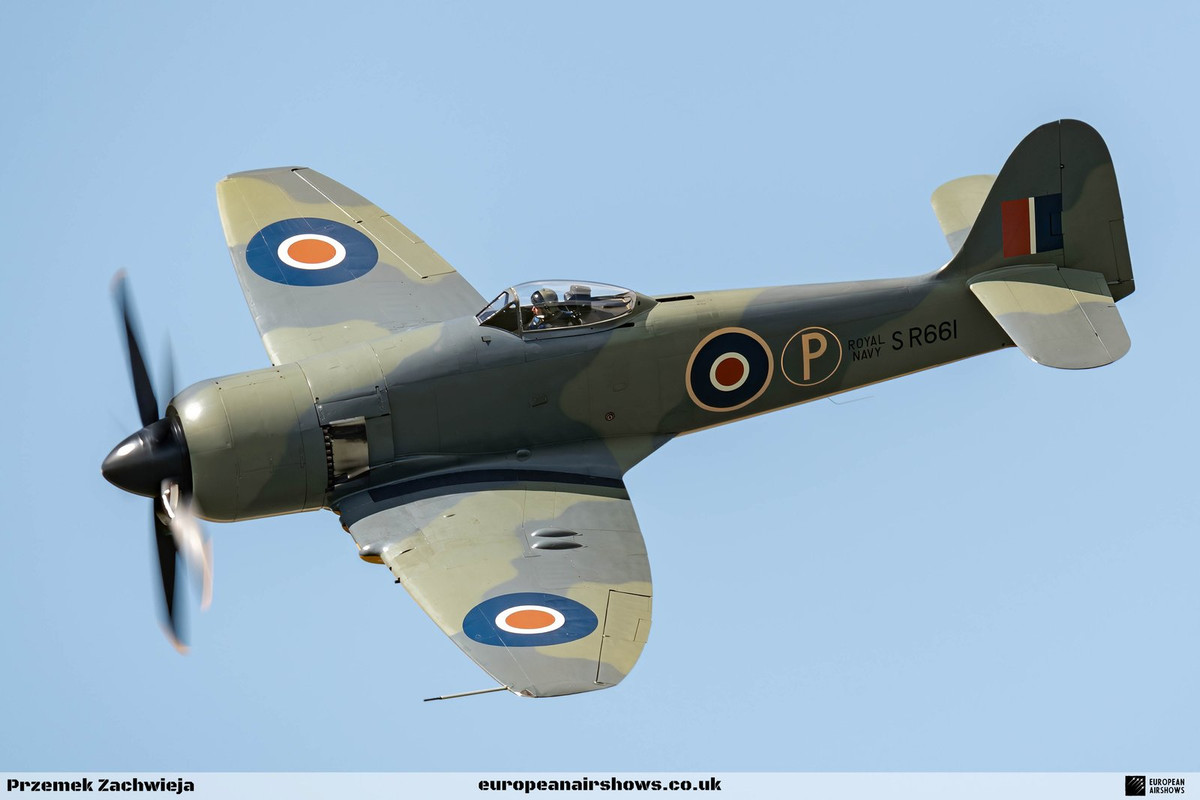
Hawker Fury Mk.II G-CBEL
About the Hawker Fury
The Hawker Fury was born from a moment of inspired engineering during World War II, when Sydney Camm and his team set out to create a fighter that was lighter, faster, and more agile than its predecessors. Originally intended to be a pure Royal Air Force fighter – a nimble, high-performance successor to the Typhoon and Tempest – the Fury was designed from the ground up with sleek lines, a modern monocoque fuselage, and those elegantly reconfigured semi-elliptical wings that hinted at refined aerodynamics. The plan was to harness the raw power of the Bristol Centaurus engine, combined with a focus on rapid climbing ability and a blistering top speed, making it a formidable contender among its contemporaries.
The project, which kicked off in earnest around 1942, saw several prototypes taking to the sky armed with various engines including experiments with Rolls-Royce Griffon variants and even a version powered by a Napier Sabre. Each flight was not only a test of technology but a glimpse into a future where speed and agility were paramount. By embodying a “light Tempest fighter” ethos, the Fury was designed to cut through the air with sharp, responsive handling—a real departure from the “overweight” fighters that had come before it.
However, as the war’s end drew near, the Royal Air Force reassessed its needs. With a wealth of proven fighters already in service, the need for the new airborne dynamo dwindled, and the RAF cancelled their order for the Fury. Though the promising design never entered mass service under its original, non‐naval guise, its innovations and engineering breakthroughs did not vanish into obscurity. Instead, the work laid the foundation for one of the most celebrated carrier fighters of the post-war era—the Hawker Sea Fury.
Specifications
Crew
1
Length
34 ft 8 in (10.57 m)
Wingspan
38 ft 4.75 in (11.7)
Height
15 ft 10.5 in (4.8 m)
Max Speed
460 mph (740 km/h, 400 kn)
Range
780 mi (1,260 km, 680 nmi)
Service Ceiling
35,800 ft (10,900 m)
Rate of climb
4,320 ft/min (21.9 m/s)
Mk.II Variant
The Hawker Fury Mk.II land-based variant carries a distinctive legacy that harks back to a time when piston engines still roared with unbridled energy over sprawling airfields and dusty deserts. Emerging from Hawker Aircraft’s evolutionary pursuit to replace heavier World War II fighters with something lighter and swifter, this version for ground operations distinguished itself from its naval cousin by shedding the carrier-specific modifications in favor of attributes that made it a true runway warrior.
Retaining the aerodynamic grace and robust framework of its carrier-bound relatives, the land-based Fury Mk.II was powered by the formidable Bristol Centaurus engine, which drove a five-bladed Rotol propeller to deliver impressive acceleration and a climb rate that left both pilots and onlookers in awe. Its compact, fully monocoque fuselage and reimagined wing structure were not merely aesthetic choices but hard-won engineering refinements that ensured reliability and agility on conventional airfields. Four wing-mounted Hispano V cannon provided a punchy offensive capability, turning the aircraft into a formidable adversary in air-to-air engagements and ground-attack sorties alike.
Although the Royal Air Force had originally positioned the design as a lightweight successor to the Tempest, evolving into what became known, in some circles, as the “Baghdad Furies” when used by the Iraqi Air Force, the land-based Mk.II version was celebrated for its versatile performance. Pilots admired its nimble handling and its balance of speed and stability—a combination that made it both a thrilling fighter and a capable bomber. While the naval Sea Fury variants honed their skills on the demands of carrier landings, the Fury Mk.II for land operations embraced a simpler, more robust undercarriage and streamlined control systems designed for rigorous airfield use and easier maintenance.
Did You Know?
- Despite its naval roots, the land-based Fury I for the Iraqi Air Force boasted impressive performance – a maximum speed of 460 mph (740 km/h) and an ability to climb to 20,000 feet in under five minutes, making it one of the fastest piston-engine fighters of its time.
- The Fury Mk.II was powered by the Bristol Centaurus 18 engine, an 18‐cylinder, air-cooled radial that produced up to 2,480 horsepower for take-off. This robust engine helped deliver outstanding speed and acceleration on land runways.
- A total of 55 “Fury I” aircraft were built for the Iraqi Air Force – earning the unofficial nickname “Baghdad Furies.” These machines were renowned not only for their combat capabilities but later also as prized heritage and racing aircraft after retirement.
- The impressive performance figures of the land-based Fury include a service ceiling of 35,800 feet and a rapid rate of climb averaging 4,320 ft/min. These attributes made it a formidable adversary in its class.
- Even after its military career, many land-based Furies found a second life in the civil sector – restored by enthusiasts, participating in airshows, and air races.
Test Your Knowledge
Fury Mk.II G-CBEL
Fury construction number 37539 has enjoyed a lively history that reads like an international adventure. Built by Hawker as a Sea Fury ISS (Iraqi Single Seat) specifically for the Iraqi Air Force, this aircraft was one of 60 produced under contract 53/1/012. In that production batch, it carried the individual production number 315.
After its service with the Iraqi Air Force, the aircraft broadened its horizons when it was purchased in 1979 by Ed Jurist and David C. Tallichet and brought to Orlando, Florida, in the United States. The plane’s next exciting chapter began in 1989 when it found a new home at the Laws/Coleman Warbird Museum in Coleman, Texas. There, it underwent extensive restoration work to bring it back to airworthy condition. By April 1991, the Fury had taken to the skies once again, proudly sporting the registration number N36SF.
The aircraft’s journey continued when, in September 1991, it was shipped to the United Kingdom. Under the ownership of John Bradshaw at Wroughton, it carried markings that paid tribute to distinguished naval aviation themes—first representing the Dutch Navy, then later the Royal Australian Navy under the number 361, and flying on the UK Civil Register as G-CBEL.
In 2009, the aircraft’s wanderlust led it to Australia, where it was registered as VH-SFW. However, the story was far from over. The aircraft eventually made its way back to the United Kingdom when Anglia Aircraft Restorations Ltd imported it and re-registered it as G-CBEL once again. Air Leasing Ltd. then took on the project of refurbishing and repainting the aircraft, choosing to honor one of Hawker’s most famous Sea Fury prototypes. The chosen prototype, coded SR661, was a modified version of the Fury Mk.II. Notably, this prototype was fitted with a tail hook—a feature that set it apart from later production models, which also included folding wings.






